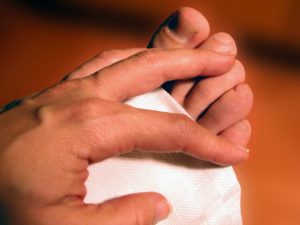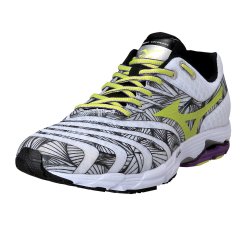Podiatry Care has put together a list of 7 essential tips for people with diabetes. Most of us know someone who has been diagnosed with Type 2 Diabetes. Many complications associated with Diabetes can be prevented with the right diabetic foot care. Seven essentials include:
1. Inspect feet and toes daily as part of your diabetic foot care routine.
Check your feet every day for cuts, bruises, sores or other changes that may be less obvious. If age or other factors hamper self-inspection, ask someone to help you or use a mirror. If you notice any cuts fail to heal within a few days with normal antiseptic and sterile dressings, call your Podiatrist or family Doctor immediately.

2. Cut toenails straight across.
Never cut into the corners, or taper, which could trigger an ingrown toenail. Use an emery board to gently file away sharp corners or snags. Notify your Podiatrist immediately if you see any redness, swelling, puss or discharge around your nails.
3. Ensure you are properly measured and fitted every time you buy new shoes.
Shoes are of supreme importance to diabetes sufferers because poorly fitted shoes are involved in as many as half of the problems that lead to amputations. Because foot size and shape may change over time, everyone should have their feet measured by an experienced shoe fitter whenever they buy a new pair of shoes. New shoes should be comfortable at the time they are purchased and should not require a “break-in” period.
4. DON’T Go barefoot if you have Diabetes.
 Not even in your own home. Barefoot walking outside is particularly dangerous because of the possibility of cuts, falls, and other foot injuries on unfamiliar terrain. When at home, wear slippers for protection. Never go barefoot.
Not even in your own home. Barefoot walking outside is particularly dangerous because of the possibility of cuts, falls, and other foot injuries on unfamiliar terrain. When at home, wear slippers for protection. Never go barefoot.
5. NEVER wear anything that is too tight around the legs.
Tight elastic tops on socks, panty hose, panty girdles, thigh-highs or knee-highs can constrict circulation to your legs and feet. Always look for non-elastic or loose fitting elastic tops when purchasing socks to aid circulation to your feet.
6. NEVER try to remove calluses, corns or warts by yourself.
Commercial, over-the-counter preparations that remove warts or corns should be avoided because they can burn the skin and cause irreplaceable damage to the foot of a diabetic sufferer. Never try to cut calluses with a razor blade or any other instrument because the risk of cutting yourself is too high, and such wounds can often lead to more serious ulcers and lacerations. See your Podiatrist for assistance in these cases.
7. Watch your diet and Exercise regularly.
People with diabetes are commonly overweight, which nearly doubles the risk of complications. Drinking excessive alcohol can contribute to neuropathy (nerve damage) which is one of the consequences of diabetes. Drinking can speed up the damage associated with the disease, deaden more nerves, and increase the possibility of overlooking a seemingly minor cut or injury. At the very least, go for a daily 30 minute walk. If you’re struggling to walk – see your Podiatrist.
Podiatry Care Podiatrists are experts when it comes to Diabetes and mobility. Seek the advice of your Podiatrist if you have any concerns about Diabetes and your feet.


